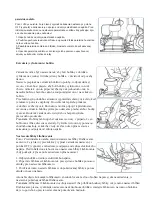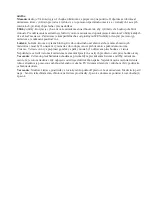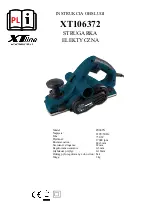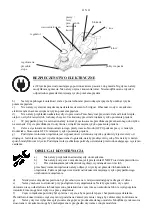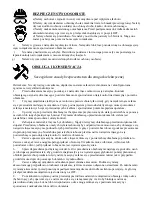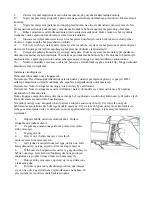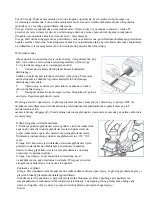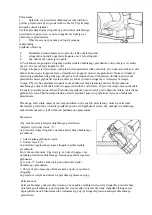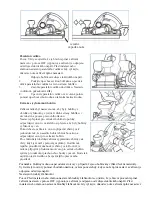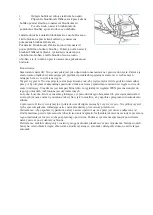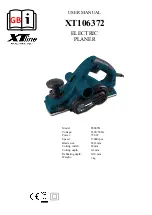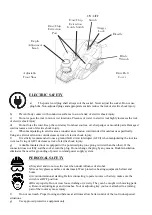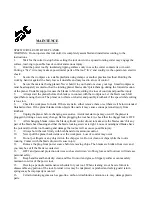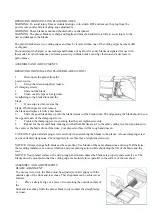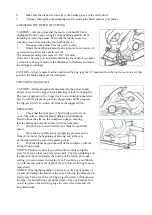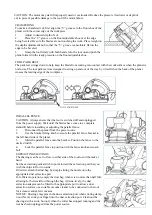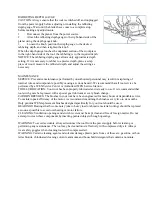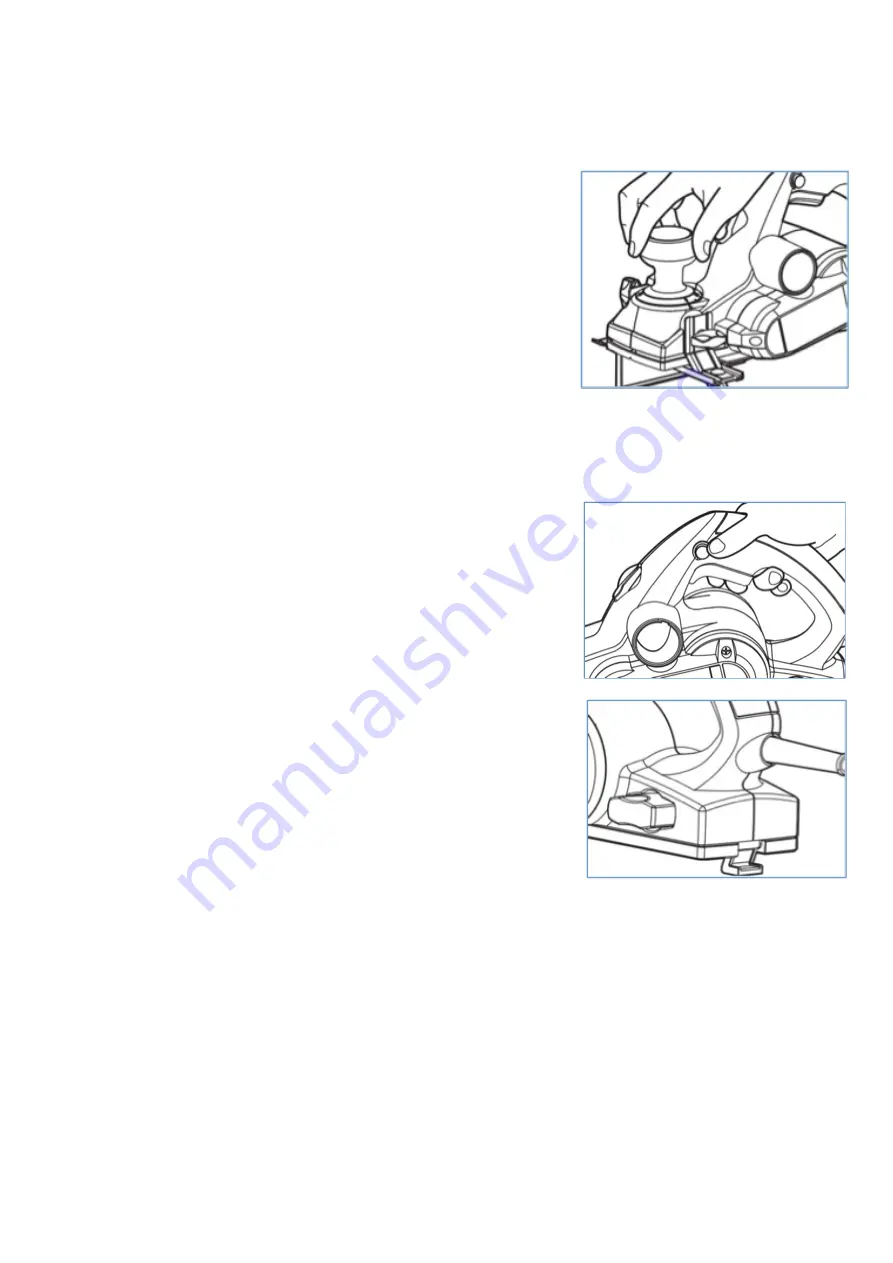
2.
Make sure the blade sits correctly in the holder groove of the cutter drum.
3.
You may then tighten the clamping screws securing the blade and use your planer
ADJUSTING THE DEPTH OF CUTTING
CAUTION - Always ensure that the tool is switched OFF and
unplugged from the power supply before making adjustments or
installing or removing blades. Wait until the blades come to a
complete stop before adjusting the depth of the cut.
1.
Disconnect the planer from the power source.
2.
Rotate the depth adjustment knob clockwise for a deeper cut
or coun-ter-clockwise for a shallower cut.
The minimum cutting increment is 1/128” (0.2 mm).
Note: If it is necessary to accurately determine the depth of cut, plane
a scrap piece of wood, measure the difference in thickness and adjust
the settings accordingly.
CAUTION - Always ensure that the number on the ring is at the “0” position when the tool is not in use. At this
position, the blade cannot cut the workpiece.
SWITCHING ON AND OFF
CAUTION - Before plugging the machine into the power supply,
always check that the trigger switch and trigger lock work properly.
The tool is equipped with a trigger lock to avoid unintentional start-
ups. To turn the planer on, press the trigger lock and then squeeze
the trig-ger switch. To switch off, release the trigger switch.
OPERATION
1.
Check that the workpiece is held in place securely on
your work surface. Hold the planer firmly with both hands.
Rest the front shoe flat on the workpiece surface, ensuring
that the blades do not make contact with the workpiece.
2.
Switch the tool on and wait for the blades to reach full
speed.
3.
Move the tool gently forward, applying pressure on the
front of the tool at the beginning of planing, and at the rear
of the tool toward the end of the planing stroke.
4.
Push the planer beyond the edge of the workpiece without
tilting it downwards.
NOTICE: Planing is easier if you incline the workpiece slightly
away from you so that you plane “downhill”. The rate of planing and
the depth of the cut determine the quality of the finish. For rough
cutting, you can increase the depth of cut. To achieve a good finish,
you will need to reduce the depth of the cut while advancing the tool
more slowly.
NOTICE: Moving the machine too fast may cause a poor quality of
cut and can damage the blades or the motor. Moving the machine too
slowly may burn or mar the cut. The proper feed rate will depend on
the type of material being cut and the depth of the cut. Practice first
on a scrap piece of material to gauge the correct feed rate and cut-
ting dimensions.
Содержание XT106372
Страница 12: ......

